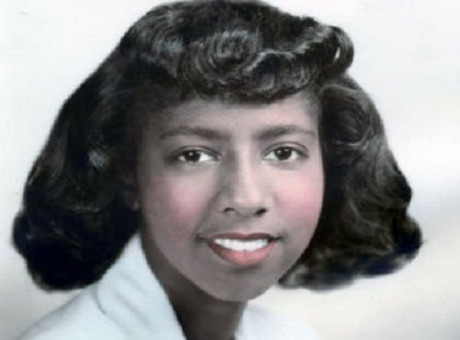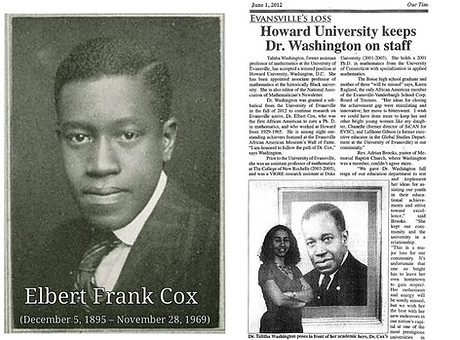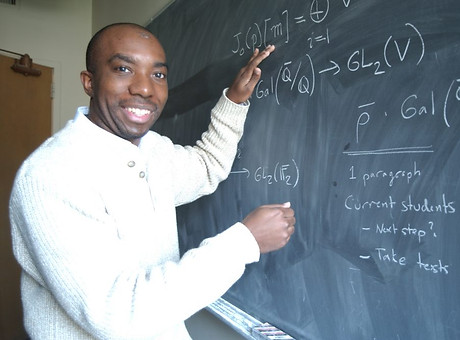THE BLACK MATHEMATICIAN
HIDDEN FIGURES PART 1
Highlighting the achievements of little-known black pioneers in the mathematical sciences

BENJAMIN BANNEKER (1731-1806)
Benjamin Banneker was a mathematician, astronomer, and inventor who was one of the first African-American intellectuals. He was hired by George Washington to help design the L’Enfant Plan, the urban plan for the nation’s capital in Washington DC. Eventually, he was placed on the planning committee at Thomas Jefferson’s request, and was responsible for designing the layout of the streets, parks, and buildings. Banneker is known for building the first clock in the New World, made entirely out of wood. It kept perfect time for 40 years. He correctly predicted an eclipse in 1789. Banneker published an annual Farmer’s Almanac from 1792-1802, and did all of the calculations by himself. In addition, Banneker was an outspoken civil rights advocate, and refused to let his race hinder his intellectual accomplishments.

DAVID BLACKWELL (1919-2010)
David Blackwell was a statistician and mathematician who made significant contributions in the areas of game theory, probability theory, information theory, dynamic programming, and Bayesian statistics. In 1941, at the age of 22, Blackwell became the seventh African-American to receive their Ph.D in Mathematics. In 1954, he published a book called Theory of Games and Statistical Decisions, which cemented him as a leading expert in game theory. Blackwell’s research in this book was instrumental to the United States’ strategies in the Cold War, which were heavily based in game theory. In 1965, Blackwell became the first African American to become admitted into U.S. National Academy of Sciences. Blackwell is one of the namesakes of the advanced statistical theorem, the Rao-Blackwell-Kolmogorov theorem, which basically shows how crude guesses can turn into good estimates.

MARJORIE LEE BROWNE (1914-1979)
Marjorie Lee Browne was a prominent mathematics educator and one of the first African-Americans to receive a Ph.D in mathematics. In 1949, Browne became the third African-American woman to receive a Ph.D in Mathematics. Browne was the head of the mathematics department at North Carolina Central University (NCCU), where she was a lecturer for Summer Institute for Secondary School Science and Mathematics Teachers, a principal investigator, and coordinator of the mathematics section. Her work focused on linear and matrix algebra and topological properties between classical groups. Browne wrote a $60,000 grant to IBM to bring a computer to NCCU. This was one of the first computers for academic computing and the first computer brought to an HBCU campus.Throughout her career, Browne worked to help gifted mathematics students, educating them and offering them financial support to pursue higher education.

ELBERT FRANK COX (1895-1969)
In 1925, Elbert Frank Cox become the first Black person in the world to earn a Ph.D. in Mathematics. He received his doctorate from Cornell University for his dissertation, The polynomial solutions of the difference equation af(x+1) + bf(x) = [Phi](x). Cox taught mathematics and physics first at West Virginia State College, then at Howard University. Cox studied polynomials as solutions to difference and differential equations. Throughout his career, Cox published two articles: the first on Euler polynomials and the Boole summation formula, and the second on three systems of mathematical grading.

MARK DEAN (1957-PRESENT)
Mark Dean was an computer engineer and inventor who helped to develop many influential technologies while working at IBM. He was apart of the team that developed the Industry Standard Architecture (ISA) system bus, which allows for computer plug-ins like disk drives and printers. His work led to the development of the color PC monitor. Dean was also on the team that created the first gigahertz computer chip, which is able to do one billion calculations per second. Dean holds three IBM patents and more than 20 patents overall. In 1996, he was named the first African-American IBM fellow.

JOSEPH DENNIS (1905-1977)
Joseph Dennis was a mathematics professor who served as the chairman of the Clark College mathematics department from 1930-1974. Dennis was one of the first African-Americans to earn a Ph.D at this time. In 1944, Dennis earned his Ph.D in Mathematics from Northwestern University. His thesis was entitled "Some Points in the Theory of Positive Definite J-Fractions".

ANNIE EASLEY (1933-2011)
Annie Easley was a barrier-breaking computer scientist, mathematician, and rocket scientist who helped to make significant progress in the exploration of the solar system. She was one of the first African-Americans to work as a computer scientist at NASA and its predecessor NACA. In 1977, Easley earned her B.S. in Mathematics from Cleveland State University. Her 34-year career included implementing computer code that analyzed alternative power technologies, developing solar, wind and energy projects, and identifying energy conversion systems and alternative systems to solve energy problems. One of her most notable achievements was working on the Centaur rocket stage, a high-energy rocket that uses liquid hydrogen and liquid oxygen to blast rockets into space.

EDRAY HERBER GOINS (1972-PRESENT)
Edray Herber Goins is a mathematician who specializes in number theory and algebraic geometry. His primary work involves Selmer groups for elliptic curves. In 1999, Goins earned his Ph.D from Stanford University on “Elliptic Curves and Icosahedral Galois Representations”. He currently teaches at Pomona College, where he runs a National Science Foundation-funded Research Experience for Undergraduates (REU) called "Pomona Research in Mathematics Experience (PRiME).”He is the president of the National Association of Mathematicians, Inc, which works to promote the development of underrepresented minorities in the mathematical sciences. He was elected to the 2019 Class of Fellows of the Association for Women in Mathematics.